This is the Print Driver for the Epilog Fusion M2 laser systems, where you will set all of your laser controls.

General Tab
We’ll start on the General tab.
First, at the top left corner of the driver you’ll find the “Resolution” settings, which can be set from 75 to 1200 DPI. The higher you set the resolution, the higher your engraving quality will be. Typically you’ll use 400 or 600 DPI for most materials you engrave.
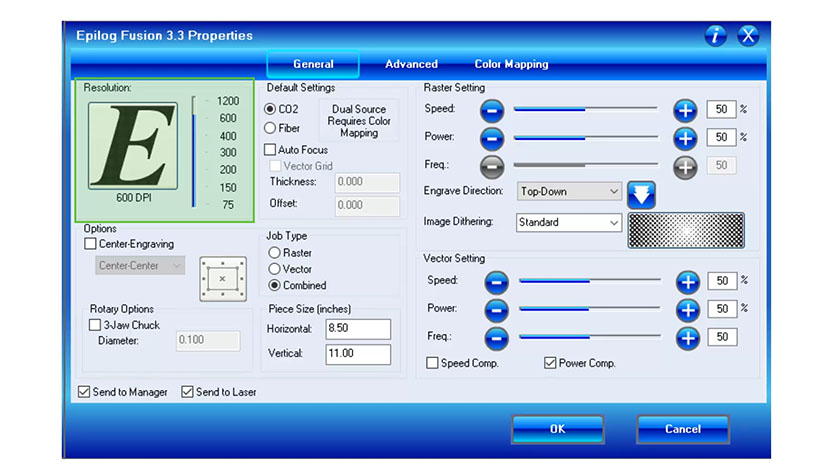
Next, choose between CO2 or Fiber lasers depending on which you have installed or which materials you want to process.
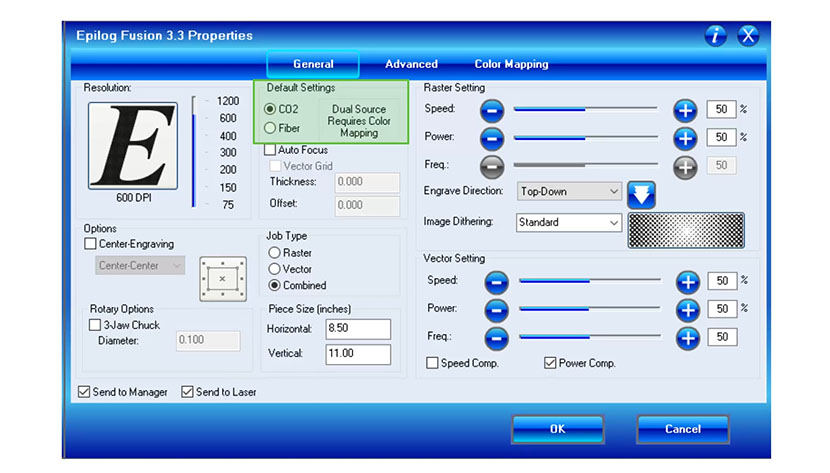
Click the Auto Focus box to enable automatic focusing on your machine. If you have your Vector Grid installed, click next to Vector Grid to change the table height taking into account the height of the vector grid. Next enter your material thickness and if you would like to offset the table, such as on a material like acrylic, you can enter this measurement here as well.
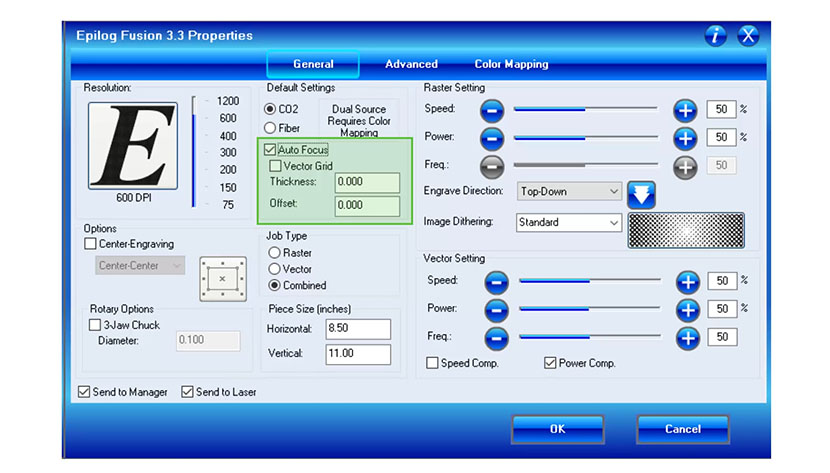
The “Job Type” area is where you choose between Raster, Vector, or Combined modes, which includes both engraving and cutting within the same job.
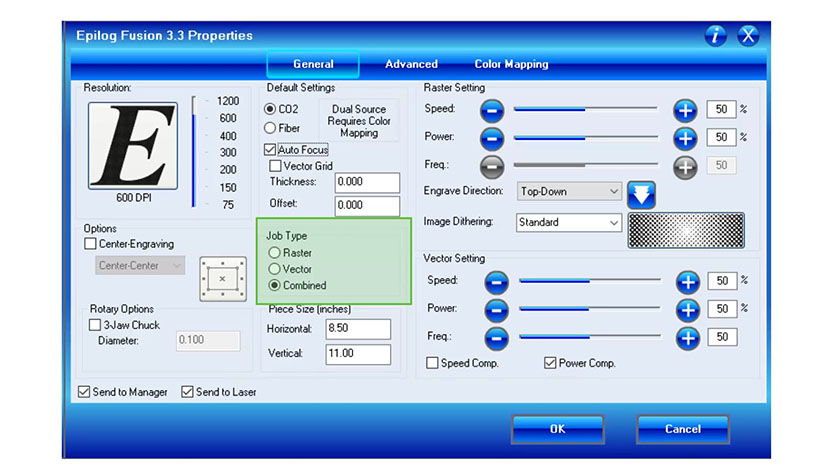
The “Piece Size” setting is where you will set your page size dimensions to match the page size of your design.
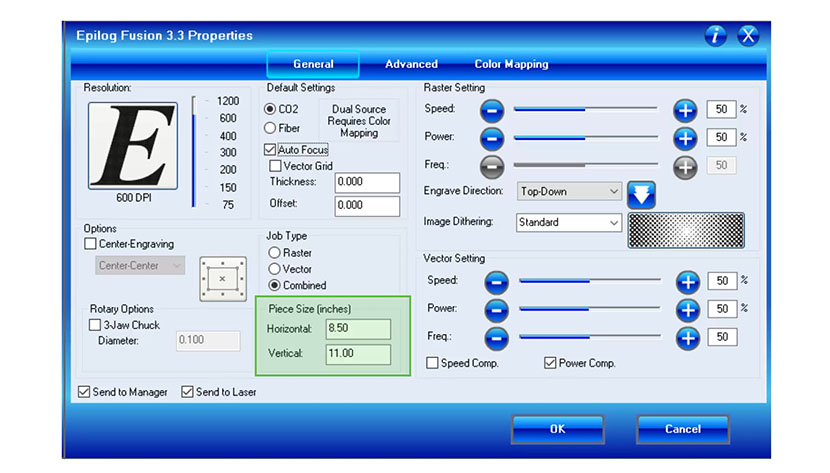
In the “Raster Setting” area you’ll set your speed and power settings, from 1 to 100%. You can find suggested speeds and powers for different materials in your manual. The frequency setting will only be active when Fiber is selected as your laser type. This refers to the pulsing of the fiber laser as well as the average output power per laser pulse.
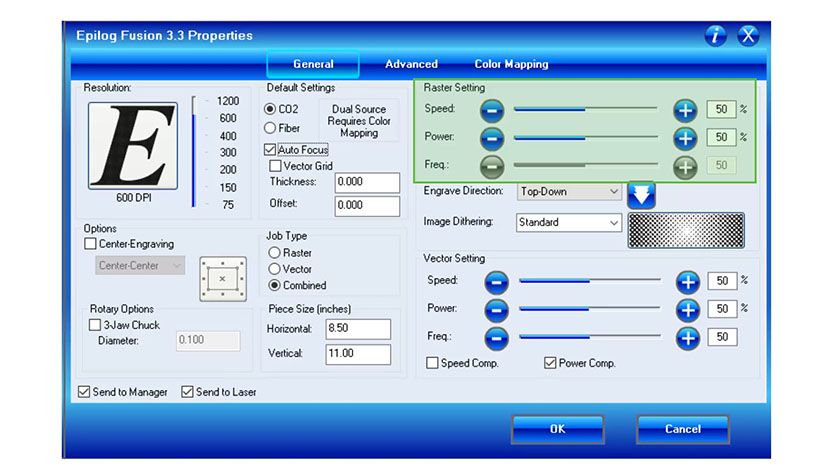
The “Engrave Direction” setting can be set to Top-Down or Bottom-Up by clicking the arrow button or using the drop-down menu.
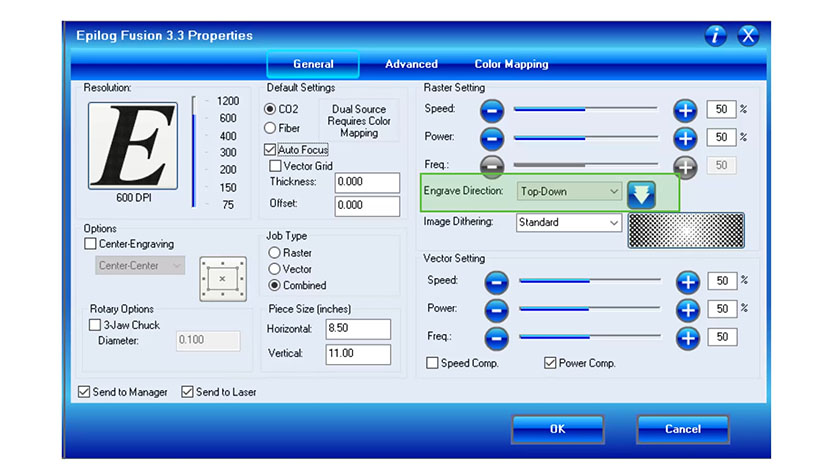
The “Image Dithering” setting is a drop-down menu where you can choose between different ways for the laser to interpret the dot pattern in your file. There are three clipart modes: Standard, Brighten, and Low Res when running lower resolution images. The next three modes, Floyd Steinberg, Jarvis, and Stucki are all used for different types of photographs.

Next, you can set your Vector settings. Start with your speed and power settings, setting each from 1 to 100%.
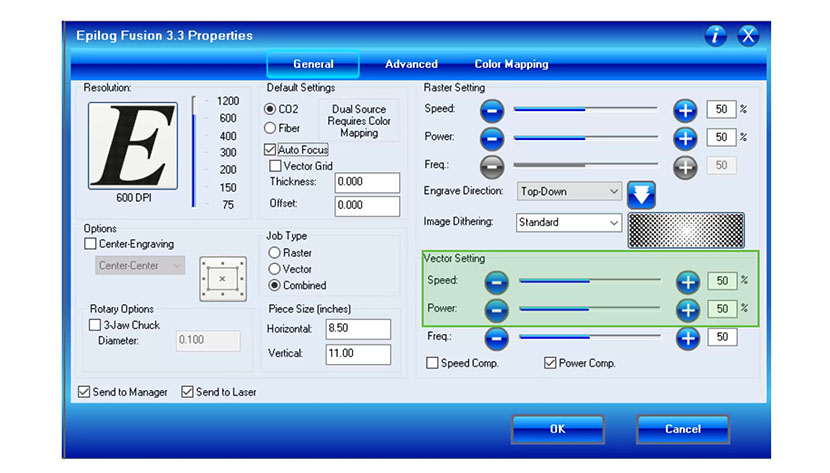
The Vector cutting frequency ranges from 1 to 100. This is the pulse rate of the laser as it cuts. A low frequency will produce a dotted line, often used for scoring paper, while a high frequency, where the laser beam is on continuously, is often used for cutting acrylic to create a flame polished edge.
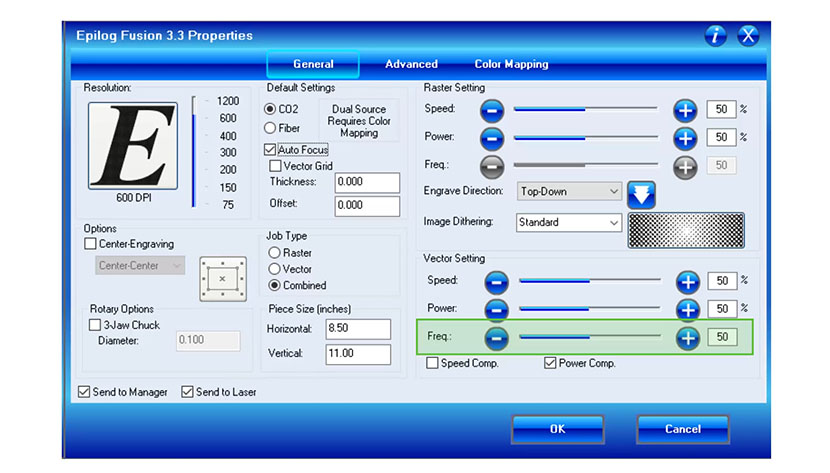
The Speed Comp check box reduces all speed settings by one half. For example, a speed setting of 10 without speed comp selected will move twice as fast as a setting of 10 with speed comp turned on. This is most often used when cutting thicker materials at very low speeds, allowing you to cut through thicker materials in a single pass.
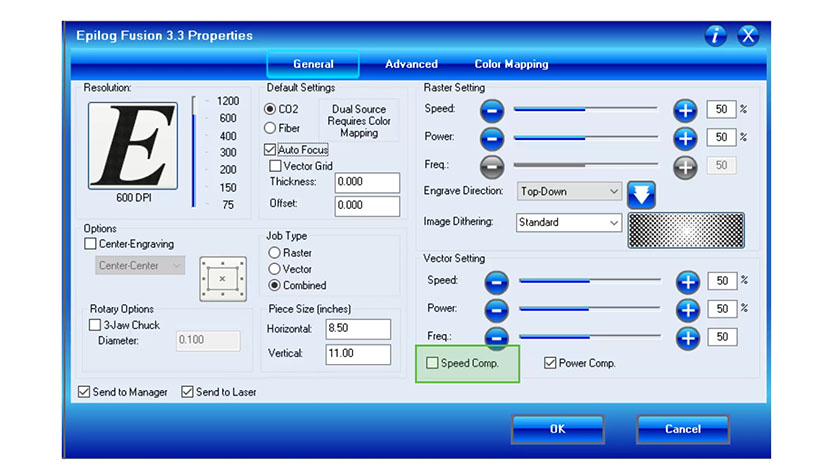
When checked Power Comp reduces the laser output when the laser carriage slows as it moves through a curve. Consider it a slow cutting option. Selecting Power Comp is especially useful for vector cutting jobs that incorporate a large number of curves. Most users find that keeping Power Comp selected is the preferred setting.
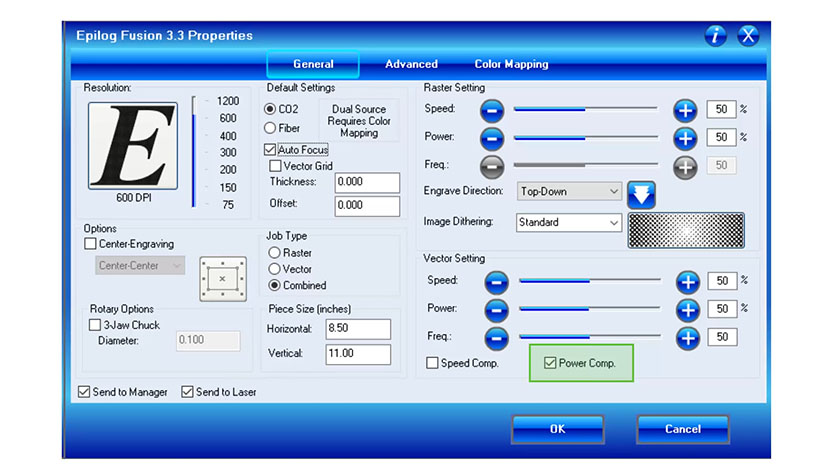
Under the Options section of driver you’ll find Center-Engraving. The Center-Engraving checkbox will enable the center-engraving features of the laser. Choose your new home position and the laser will center your engraving at that position.
You can choose between left-center, top-center, page-center, and center-center positioning.
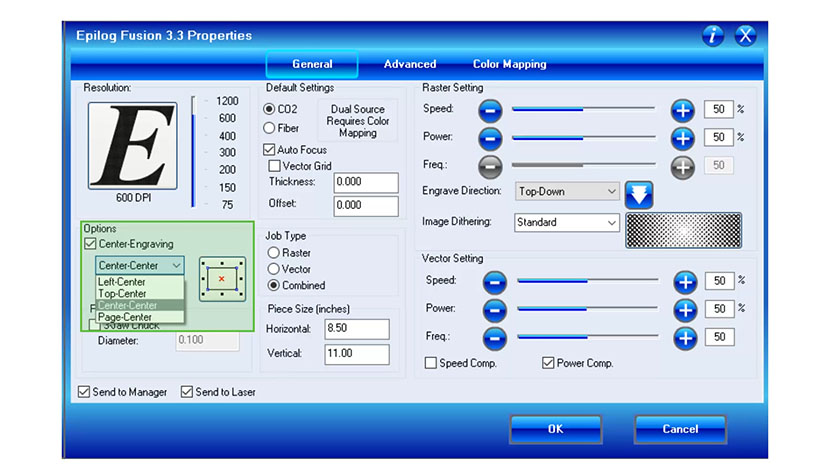
Under Rotary Options, select the checkbox if you are using the 3-Jaw Chuck Rotary Attachment in the system. This is not necessary if you are using the standard Rim-Style Rotary Attachment. After selecting the check box, enter the diameter of your piece.
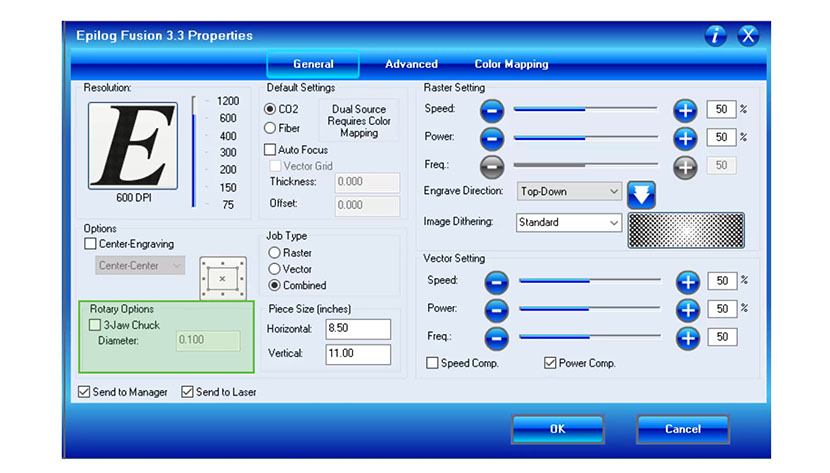
Then you can choose to send the project to the Job Manager for easy access later…
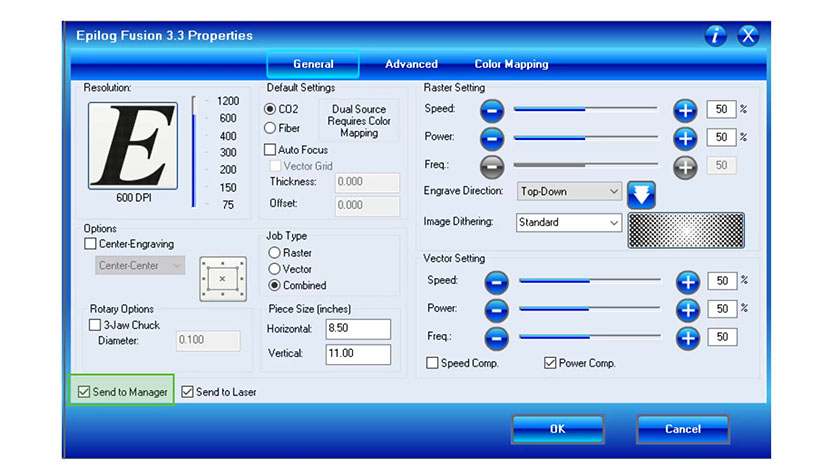
…or to send the job directly to the laser, or both.
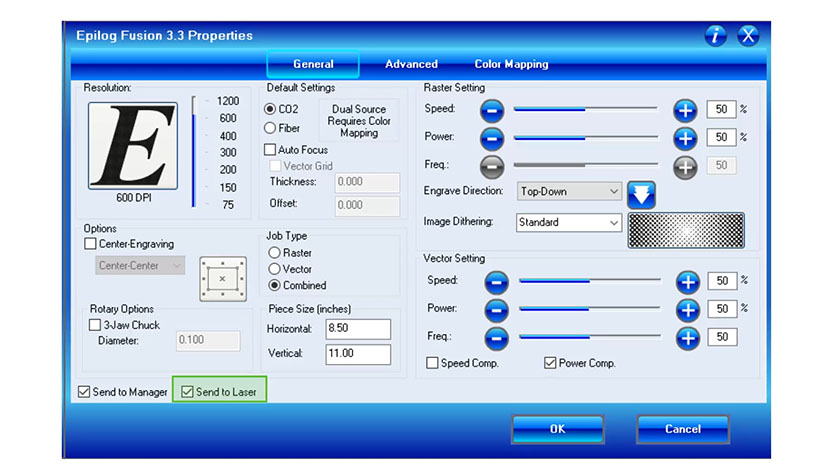
Advanced Tab
Next, we’ll move on to the Advanced tab at the top of the screen.
The first area of this tab is the “Raster Type” setting. Typically you will be operating the laser in Basic mode.
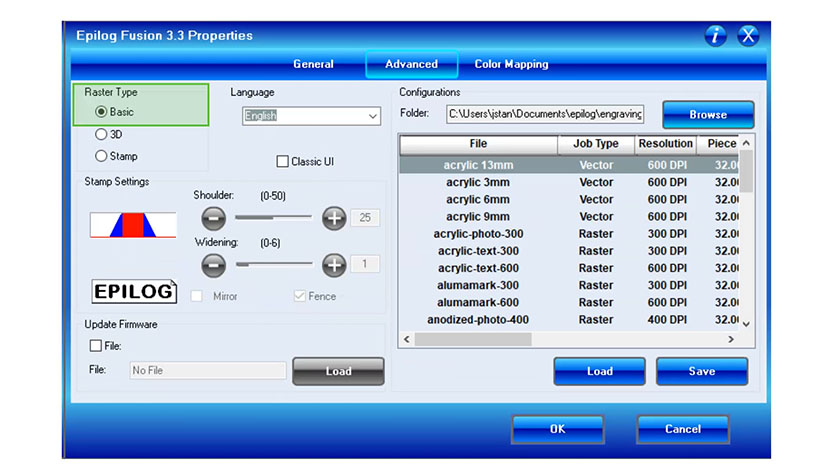
3D mode changes how the laser looks at the grayscale images in your design, and will change the laser power applied to each dot, creating a 3D gradient effect on your material.
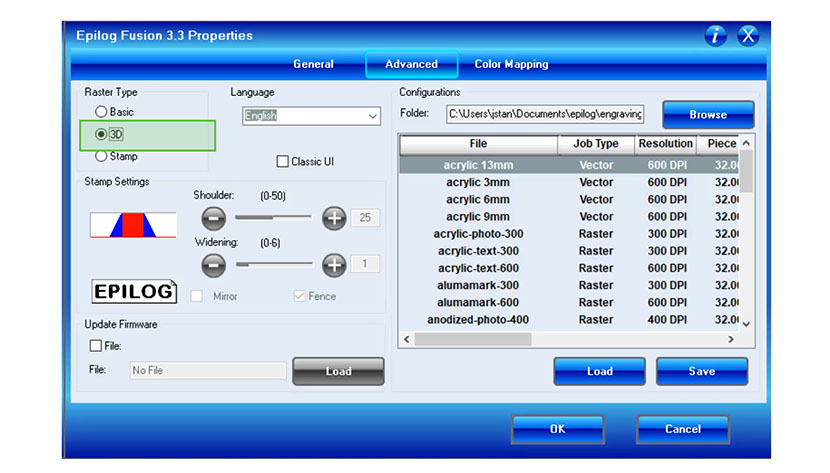
Stamp mode is used to enable the laser’s rubber stamp settings.
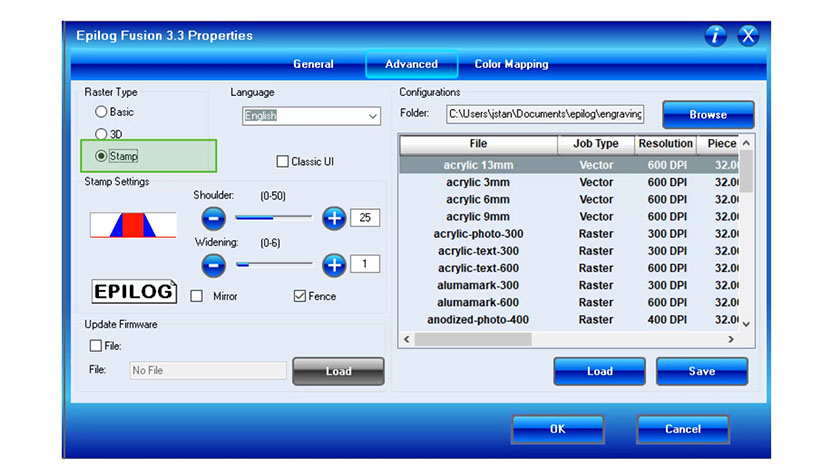
Under “Stamp Settings”, the Shoulder setting adjusts the angle of the sides of the stamp.
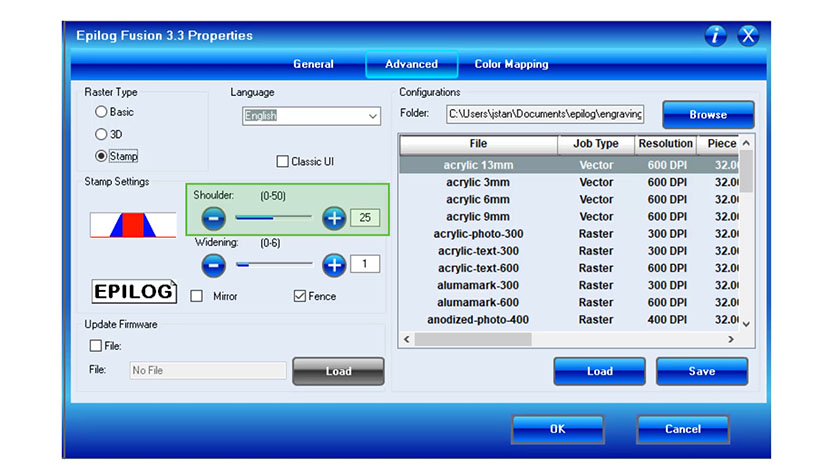
The “Widening” setting adjusts the boldness of the characters.
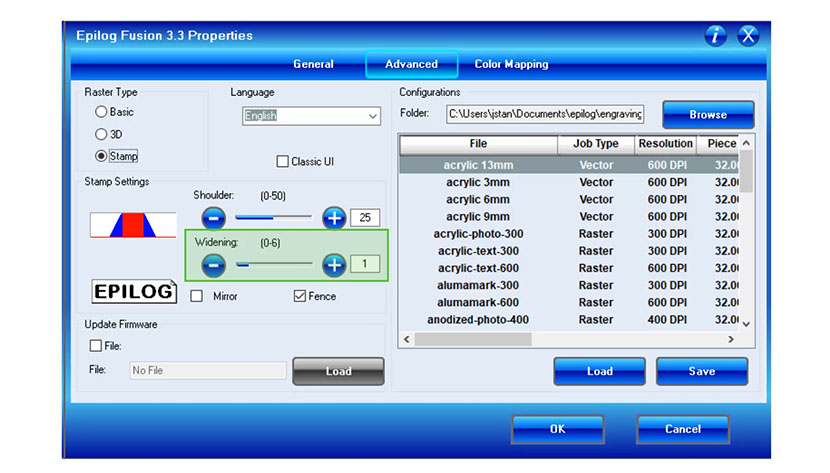
Selecting the “Mirror” checkbox automatically inverts the artwork for you.
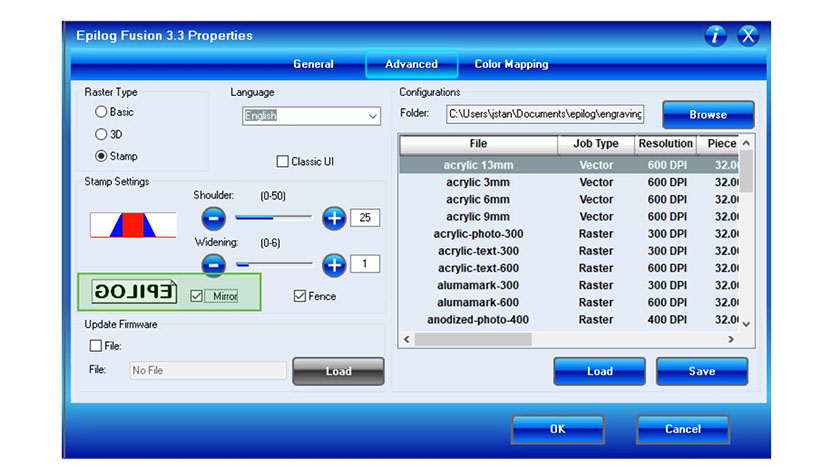
Selecting the “Fence” checkbox tells the laser you have created an outer border on each stamp on the sheet.
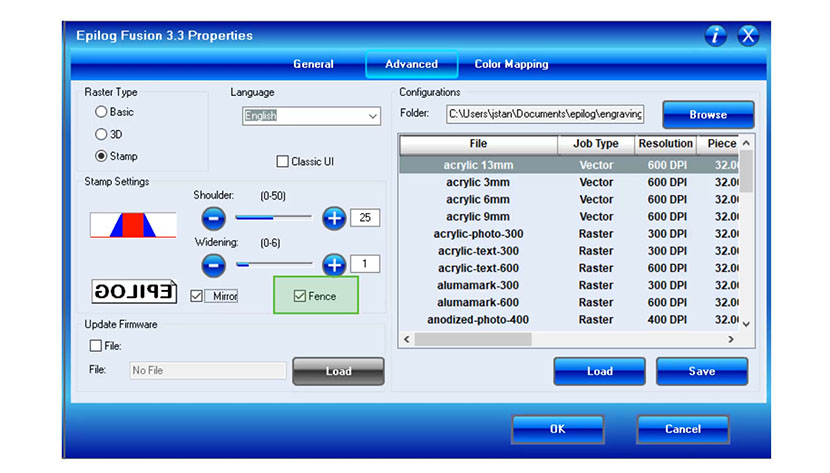
When you receive a notification of a firmware update on your system, select the “Update Firmware” checkbox, then load the file to start the firmware installation process.

Under Language, you can change the language displayed on the print driver.
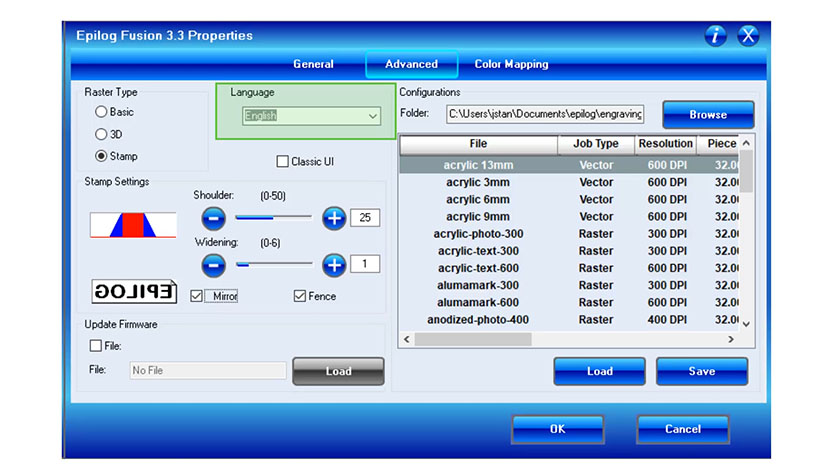
For users that prefer the Legacy print driver Epilog has provided, select the “Classic UI” checkbox.
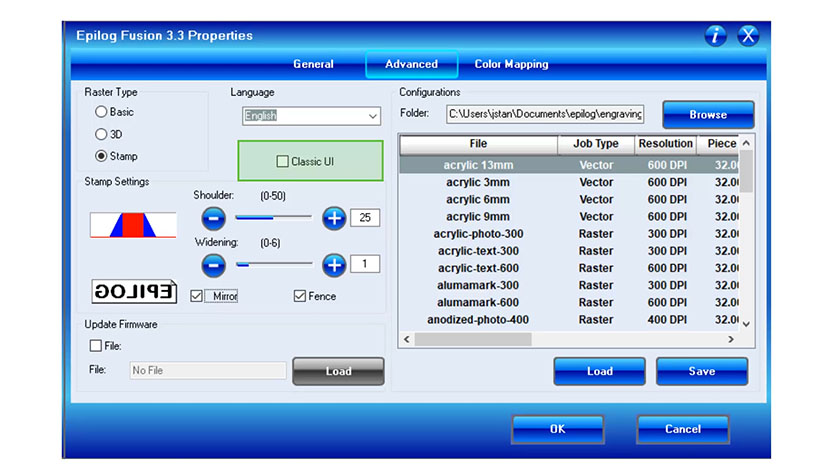
The “Configurations” area of the driver allows you to save and access material and job settings. When your settings are perfect for a project, save them for the next time you need to run that job. You can also load our suggested material settings for materials into the driver from the driver download page on our website.
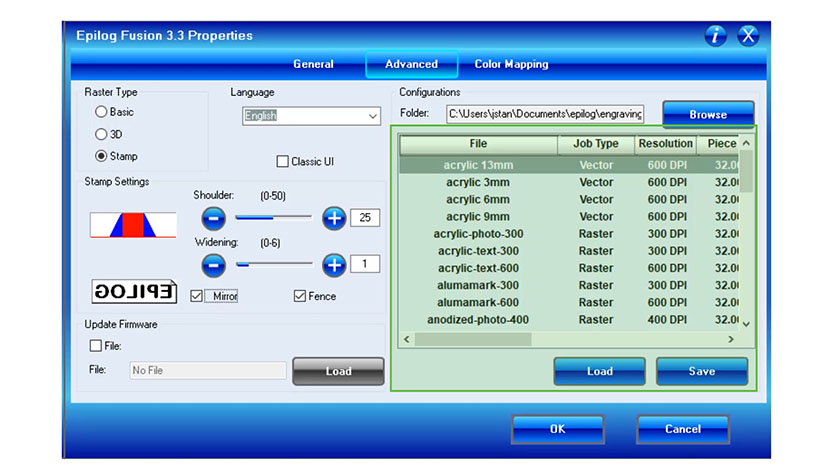
Color Mapping Tab
Finally, we’ll look at the “Color Mapping” Tab at the top.
Color Mapping lets you set different speeds and powers to different colors within your artwork. Click the checkbox to enable the “Color Mapping” settings.
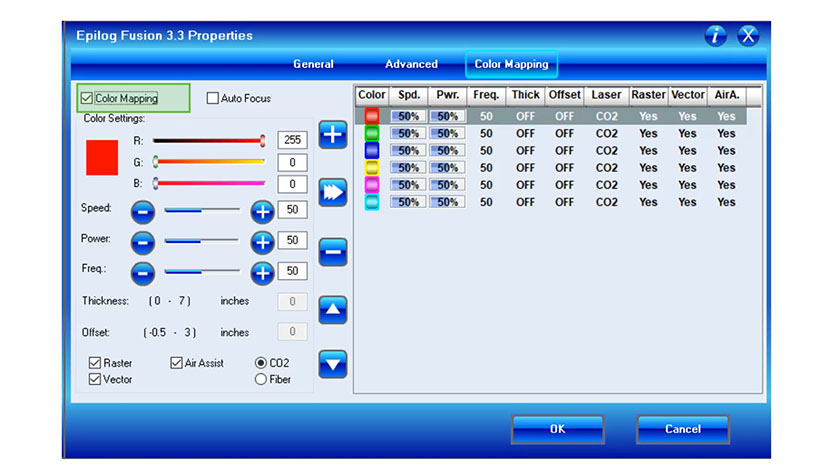
Change the speed, power, frequency, focus and offset for each color and whether to activate in raster, vector, or combined mode.

When you’re done adjusting your settings, click the right arrow to apply your new settings.
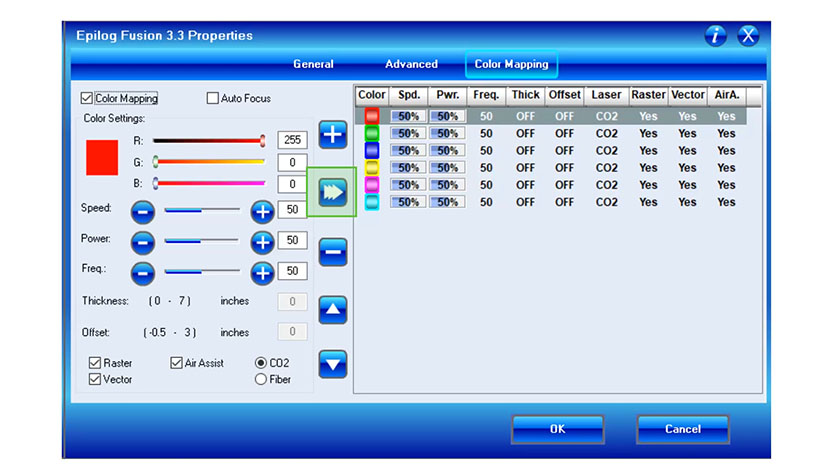
This was a basic overview of the Epilog Fusion M2 print driver. When you’re done adjusting your settings, click the OK button to print the job to the laser or to send it to the Job Manager.
